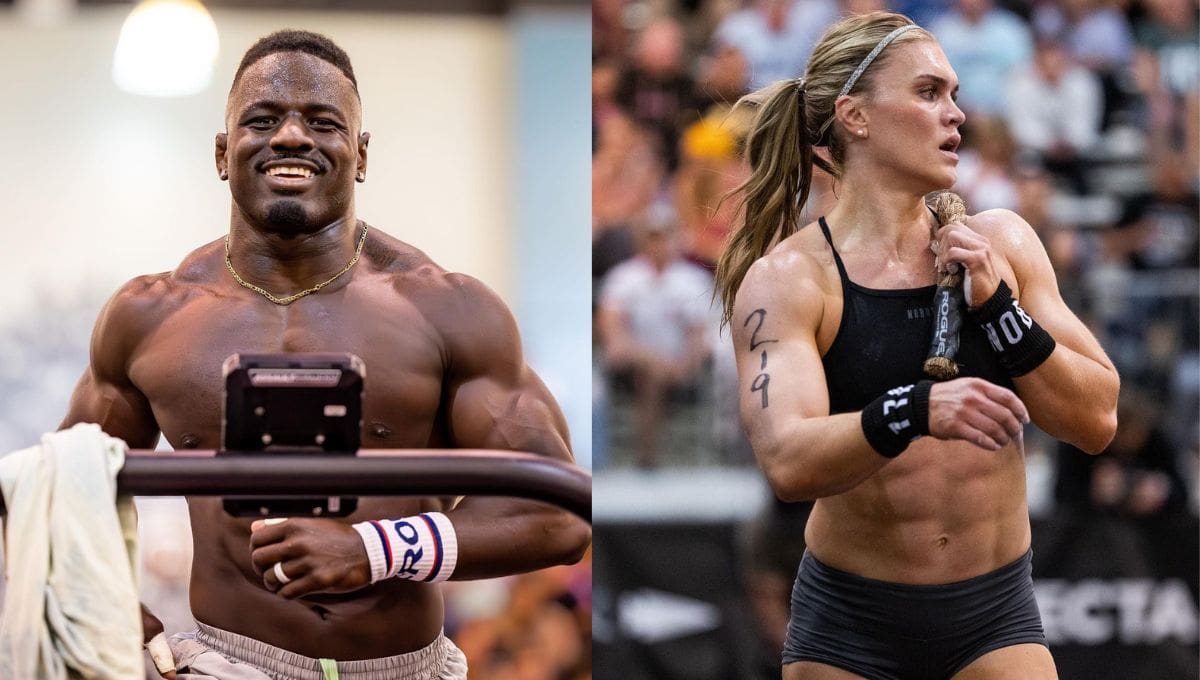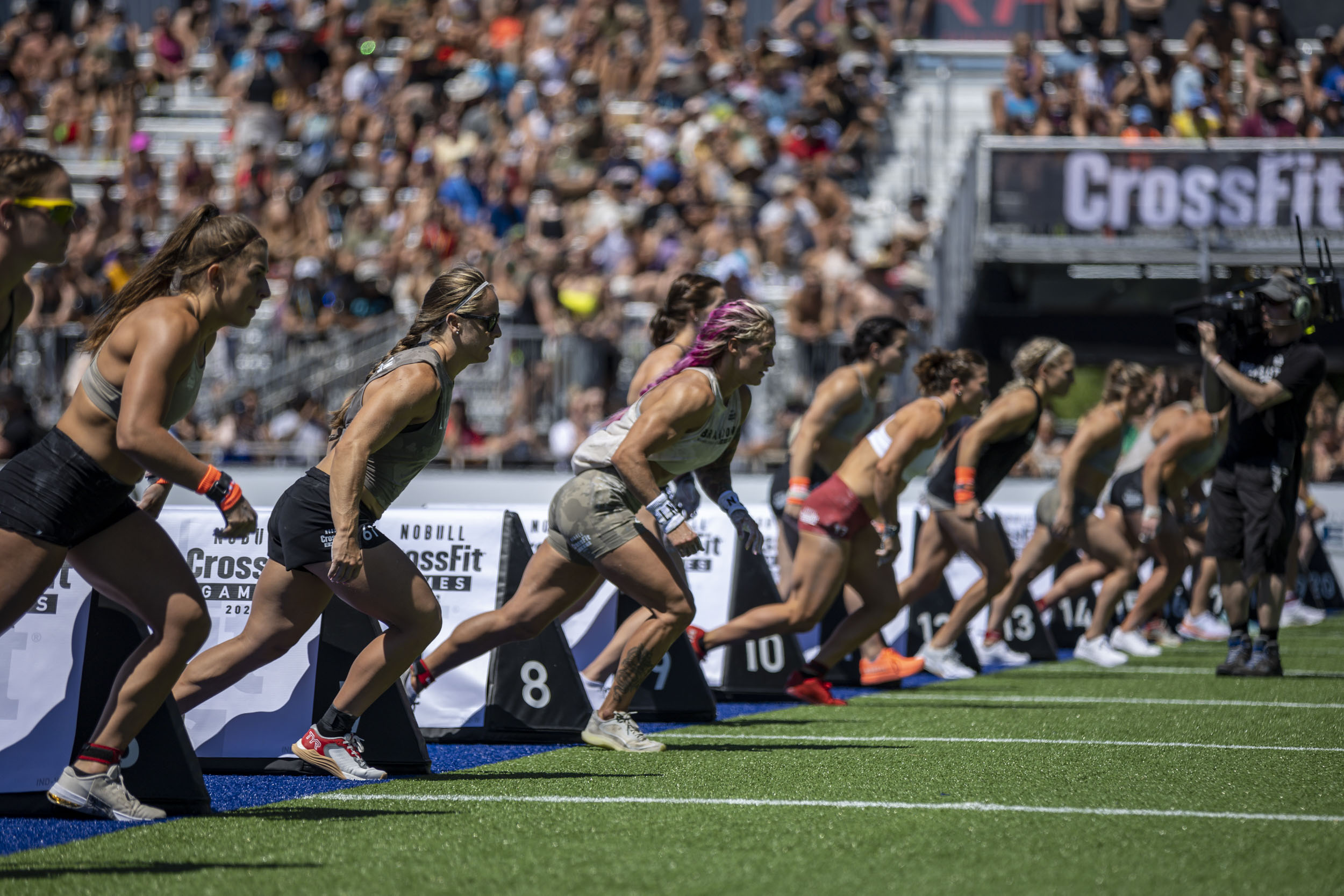The CrossFit Games Death

The CrossFit Games Death event is a grueling test of physical and mental endurance, a true testament to the CrossFit athlete’s grit and resilience. It’s a challenge that has evolved over the years, showcasing the ever-changing nature of the Games and the athletes’ remarkable adaptability.
The Evolution of the CrossFit Games Death Events
The “Death” event has a rich history in the CrossFit Games, with its format and challenges evolving over time. Its original form, the “Death by” format, introduced in the 2007 Games, involved completing a specific workout for a predetermined number of rounds, with the number of rounds increasing by one each minute. This format pushed athletes to their limits, forcing them to maintain a high level of performance under increasing pressure.
The early Death events, like the “Death by Burpees” in 2007, were characterized by their simplicity and brutal efficiency. However, as the Games progressed, the Death events became more complex, incorporating a wider range of movements and equipment. This evolution reflected the increasing complexity of CrossFit training and the growing diversity of athletes participating in the Games.
The Original “Death” Event Compared to Its Modern Iterations
The original “Death” event, “Death by Burpees,” was a straightforward test of pure endurance and cardiovascular fitness. Athletes had to complete as many rounds as possible of 1 burpee in the first minute, 2 burpees in the second minute, and so on. This simple yet brutal format quickly became a staple of the Games, testing the athletes’ ability to push through fatigue and maintain a high level of intensity.
In contrast, modern Death events are often more multifaceted, incorporating a combination of movements, equipment, and time domains. For example, the “Death by Snatch” event in the 2019 Games involved completing as many rounds as possible of 1 snatch in the first minute, 2 snatches in the second minute, and so on. This event challenged not only the athletes’ strength and power but also their technical proficiency and ability to maintain a high level of precision under pressure.
Notable Athletes Who Have Faced “Death” Challenges
Many notable athletes have faced the “Death” challenge, showcasing their resilience and determination.
- Rich Froning, a four-time CrossFit Games champion, famously conquered the “Death by Burpees” event in the 2007 Games, setting a record of 17 rounds. His performance became legendary, highlighting his exceptional endurance and work ethic.
- Mat Fraser, a five-time CrossFit Games champion, faced the “Death by Snatch” event in the 2019 Games, demonstrating his remarkable strength and power. He completed 15 rounds, showcasing his ability to maintain a high level of intensity and precision under pressure.
- Tia-Clair Toomey, a five-time CrossFit Games champion, has consistently excelled in Death events, proving her incredible strength, power, and endurance. She has tackled various Death events throughout her career, including the “Death by Snatch” in the 2019 Games, showcasing her ability to adapt to different challenges.
The CrossFit Games Death events have become a cornerstone of the Games, testing the athletes’ limits and pushing them to new heights. The evolution of these events reflects the ever-changing nature of CrossFit and the incredible adaptability of its athletes.
Anatomy of a CrossFit Games Death Event

The CrossFit Games “Death” event is a staple of the competition, known for its grueling nature and its ability to test the limits of athletes’ physical and mental fortitude. It’s a testament to the sport’s emphasis on pushing boundaries and challenging the human body in ways that few other sports can match.
Key Components of a Death Event
The design of a “Death” event is intentionally challenging, requiring athletes to push through fatigue and discomfort. Here’s a breakdown of the key components:
| Component | Description |
|---|---|
| Workouts | “Death” events typically consist of multiple rounds of high-intensity exercises, often with a time cap or a specific rep scheme. The movements are chosen to test a wide range of fitness skills, including strength, endurance, power, and gymnastics. |
| Time Constraints | Time constraints play a crucial role in “Death” events. Athletes are often racing against the clock, adding an extra layer of pressure and urgency to their performance. This forces them to make strategic decisions about pacing and movement selection. |
| Scoring Criteria | Scoring in “Death” events can vary, but it typically involves measuring the number of rounds completed or the number of reps performed within a set time limit. |
| Penalties | Penalties are often incorporated into “Death” events to discourage improper technique or rule violations. This can include time penalties for dropped weights, missed reps, or improper form. |
Physical and Mental Demands
The physical demands of “Death” events are immense. Athletes are pushed to their absolute limits of strength, endurance, and power. The mental demands are equally challenging, as athletes must maintain focus and motivation while battling fatigue, pain, and doubt.
Most Challenging Aspects
The most challenging aspects of “Death” events include:
- Cumulative Fatigue: The relentless nature of the workouts, with multiple rounds and high-intensity movements, leads to extreme fatigue. Athletes must overcome the urge to slow down or give up, even when their bodies are screaming for rest.
- Mental Toughness: The mental aspect of “Death” events is crucial. Athletes must maintain focus, composure, and motivation in the face of physical and mental exhaustion.
- Strategic Decision-Making: Athletes need to make strategic decisions about pacing, movement selection, and how to best manage their energy throughout the event.
- Pain Tolerance: “Death” events often push athletes to their pain thresholds. They must learn to manage discomfort and push through it to achieve their best performance.
Impact and Legacy of the CrossFit Games Death

The CrossFit Games Death, a grueling event known for its intensity and difficulty, has left an indelible mark on the world of CrossFit. While it has garnered immense popularity and respect for its ability to test athletes’ limits, the event has also sparked debates about its impact on competitors’ mental and physical well-being, as well as the ethical implications of such extreme challenges.
Psychological Impact on Athletes, Crossfit games death
The psychological impact of “Death” events on athletes is multifaceted and can range from profound motivation to debilitating anxiety. Athletes participating in these events often experience a surge of adrenaline and a sense of accomplishment, pushing their physical and mental boundaries. However, the extreme demands of these events can also lead to feelings of exhaustion, doubt, and even fear.
The constant pressure to perform at peak levels can lead to mental fatigue, making it challenging for athletes to maintain focus and composure. The psychological impact of “Death” events can be further amplified by the competitive environment, where athletes are constantly striving to outperform each other.
Strategies to Overcome Challenges
Athletes employ a variety of strategies to overcome the mental and physical challenges posed by “Death” events. These strategies often involve a combination of mental preparation, physical training, and support systems.
- Mental Visualization: Athletes often visualize themselves successfully completing the event, mentally preparing for the challenges ahead and building confidence.
- Positive Self-Talk: Athletes engage in positive self-talk, reminding themselves of their strengths and capabilities, helping to maintain focus and motivation.
- Breathing Techniques: Athletes utilize deep breathing techniques to manage stress, anxiety, and fatigue, allowing them to remain calm and focused under pressure.
- Support Networks: Athletes rely on their coaches, trainers, and fellow competitors for support and encouragement, helping them navigate the emotional and physical demands of the event.
Ethical Implications of “Death” Events
The ethical implications of “Death” events in sports have been a subject of ongoing debate. Critics argue that these events prioritize spectacle over athlete safety and well-being, potentially leading to injuries and long-term health consequences.
- Risk of Injury: The extreme nature of “Death” events increases the risk of injury, potentially leading to long-term health complications.
- Pressure to Perform: The intense pressure to perform at peak levels can lead to unhealthy behaviors, such as overtraining and ignoring warning signs of injury.
- Mental Health: The mental and emotional strain of these events can contribute to mental health issues, such as anxiety, depression, and burnout.
Proponents of “Death” events argue that they push athletes to their limits, fostering resilience, determination, and a spirit of pushing boundaries. They believe that these events offer a unique platform for athletes to showcase their physical and mental capabilities.
The ethical debate surrounding “Death” events highlights the need for a balance between pushing athletes to their limits and ensuring their safety and well-being. The organizers of these events must carefully consider the risks involved and implement measures to mitigate potential harm to participants.
Yo, CrossFit Games death is real, like, some peeps have actually passed out or gotten hurt doing those crazy workouts. But, you know, CrossFit is all about pushing your limits, right? And that’s why the CrossFit Games 2024 are gonna be epic, with all the top athletes going head-to-head.
It’s gonna be a total spectacle, but gotta remember, safety first, always. So, stay tuned for the sickest CrossFit action, but don’t forget to watch out for those crazy moves!
Yo, the CrossFit Games are no joke, man. It’s like a super intense competition, and sometimes things can go wrong. You know, some athletes have even died doing it. And, it’s not just the crazy workouts, there’s also water safety risks.
Like, check out this article on crossfit games drowning It’s wild, but the Games are all about pushing limits, and that can lead to some serious consequences. So, yeah, it’s a dangerous game, but it’s also one of the most intense and exciting sports out there.